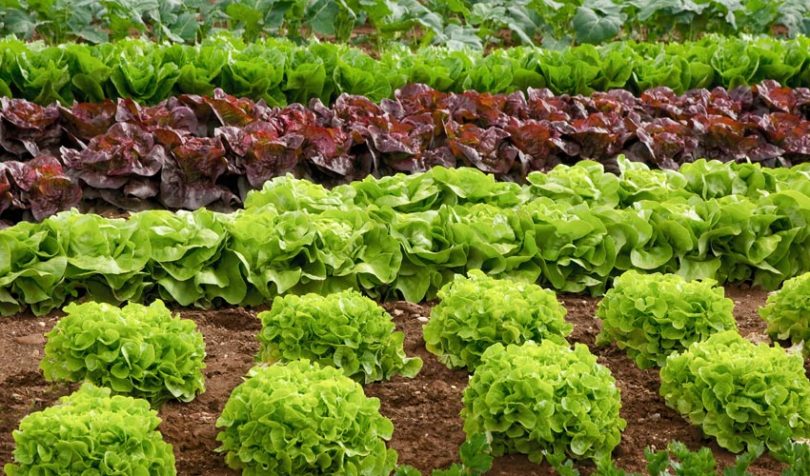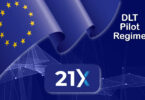To achieve blockchain food traceability from farm to plate means smaller producers, be they farmers or fishermen, need to participate. Some have voiced concerns that for smaller players taking part in traceability projects is an additional burden both in terms of time and cost. It’s an issue of inclusion. At Ledger Insights we thought that producers had to pay at least $100 a month to participate in IBM’s Food Trust, but we were wrong. Only those who buy value-added services are charged.
In August 2017 IBM first unveiled the Food Trust initiative with ten significant founding partners in Dole, Driscoll’s, Golden State Foods, Kroger, McCormick and Company, McLane Company, Nestlé, Tyson Foods, Unilever and Walmart. The platform went live last October.
This past September, Walmart asked all suppliers of fresh leafy greens to join the initiative within a year. And there was a deadline of January 2019 for the first phase of one-step traceability. Hence, Walmart worked with IBM to ensure the barrier to entry was as low as possible.
“If you want to upload information to, and be part of the ecosystem and connect with Partners. It’s free. There is no charge,” said Ramesh Gopinath, IBM’s VP of Blockchain Solutions for Supply Chain. “So, you know when Walmart said ‘Dear leafy green supplier, please join IBM Food Trust’, they knew full well that we’re not going to be charging the ones who don’t want to buy specific applications on IBM Food Trust.”
If those that upload aren’t charged, from a commercial perspective, it’s vital that the rest pay. Other initiatives have found cost resistance from large companies unwilling to foot the bill for low-value items such as vegetables.
Time is money
Back to the other issue for small suppliers: their time. The very first step in the process is to tag the produce at the point of origin. In the case of fruit and vegetables that may be adding a barcode sticker to a crate at picking time.
When Ledger Insights spoke last year to Gil Perez, senior VP at SAP he commented that if “Bumble Bee [tuna] would come to their fisherman and say ‘Hey, I want you to do ten more things today, but you’re not getting any kind of compensation for it,’ the fishermen would obviously not be interested in doing that.”
But IBM’s Gopinath had an example of how small suppliers can benefit. “When recalls happen the farmers and the little suppliers, they get significantly affected.” Even though upfront it may seem like extra work, sharing data can prevent blanket product bans. Gopinath continued: “They may benefit tremendously because if you’re not the one that had a problem, you would be left out during the surgical recall, it won’t touch you.”
The vision
Enabling targeted recalls is one aspect of IBM’s vision for the project. Sharing supply chain data can help to tackle food waste, food freshness and food fraud.
Around Thanksgiving, just two months after Walmart asked its leafy green suppliers to join IBM’s Food Trust, the U.S. Centers for Disease Control and Prevention (CDC) said all romaine lettuce should be thrown away because of an E. Coli outbreak. It was the third blanket romaine ban of the year.
“That problem is primarily a collaboration problem,” said Gopinath. “Where information is shared appropriately between various parties in the ecosystem you could get to exactly where the contaminated product is and do a surgical recall saving a lot of people a lot of money.”
Food freshness is a different aspect of the waste problem. Gopinath spoke of the typical shelf life of strawberries being 14 to 20 days. If you buy strawberries 18 days after harvest, they will stay fresh in the fridge for two days at best. He believes that by sharing information collaboratively from farm to Driscoll’s to logistics to Walmart, you can achieve the maximum residual life.
A third problem is food fraud. “Horse meat passed off as beef or organic food being labeled organic when it is not. More organic food is consumed than is produced is the joke,” commented Gopinath. “All these things we essentially view as collaboration problems.” And the solution to collaboration problems is to share information.
And by sharing data, consumer transparency applications are also enabled. For example, Carrefour in Spain has a mobile app that the supermarket built on top of IBM Food Trust. Consumers can scan a QR code on a chicken, and it will tell you the date of slaughter, whether it’s antibiotic free and other relevant information.
The journey
So the business model involves free uploads, but apps (or Dapps) built on top of the food data sharing platform by IBM and others will be monetized. Gopinath was keen to point out that IBM didn’t arrive at the business model or governance on its own. It was a learning experience through collaborating with the companies that were part of the Foundation program.
Another outcome from the collaboration is that the organization that uploads the data retains the ownership. However, some of the potential applications are network level analytics, which involves sharing of data, so how does that work?
“This too we discovered as part of the IBM Food Trust Foundation program because some companies were more comfortable and eager to go for the value by sharing,” said Gopinath. “Others were like ‘Wait a minute here. I need to think through this twice.'” As a result, the organization that uploads gets to decide permissions at a granular level. For example, permissions can be applied to a specific shipment of strawberries from A to B. The permissions can specify the parties that can view the transaction, or that the data is accessible by everybody or nobody.
In terms of what gets uploaded, the data falls into four groups: supply chain events, transactions, master data such as the kinds of products and locations, and certificate data. And the data formats comply with GS1 standards.
The platform isn’t limited to raw foods. The Foundation partners also include companies such as Unilever and Nestle with products like ice cream made of multiple ingredients. So with IBM Food Trust, it’s possible to tunnel down into a batch of ice cream and be able to tell from where the sugar or vanilla came.
The app store for food
Gopinath compared IBM’s Food Trust and third-party apps to Apple’s mobile app store a few years ago. “They came out with the platform, and you had a few apps that came directly from Apple. Now it is similar to that here. IBM has a few applications, Trace, Freshness, a few things”.
Gopinath acknowledged that the focus right now is on the core platform and getting as much data as possible onto the system. So while basic APIs exist for third-party developers to integrate, these should get richer over time. Third party companies have already been developing applications for more than a year.
For example, one company is working on a value-added cold chain solution for restaurant deliveries, because refrigeration disputes are common. Companies that supply temperature or humidity sensors are also building apps. At a business level, the companies will sell their products and services, and IBM will also earn a royalty payment.
It’s true that many developers have flourished working on top of Apple’s platforms. But other third-party developers have stumbled following initial success after Apple later released competing apps which crowded them out. But that concern isn’t just relevant to IBM Food Trust, its an issue for all blockchain platforms created by technology consultants.
How blockchain developers navigate that issue could have a significant impact on the size of the ecosystem which will be the ultimate success metric.
On March 26-27 2019 Hanson Wade are running a conference, Blockchain for the Food & Beverage Supply Chain in San Francisco. Ledger Insights is a media partner.







